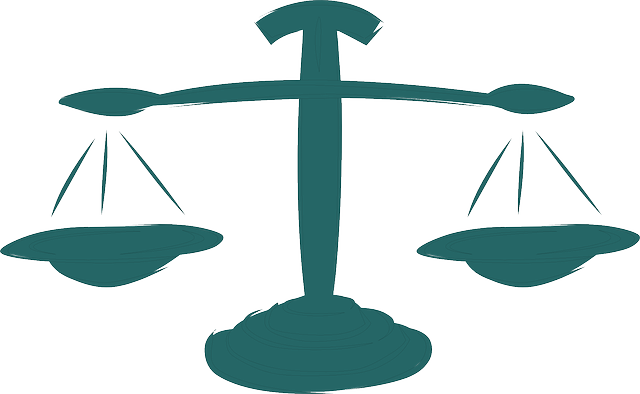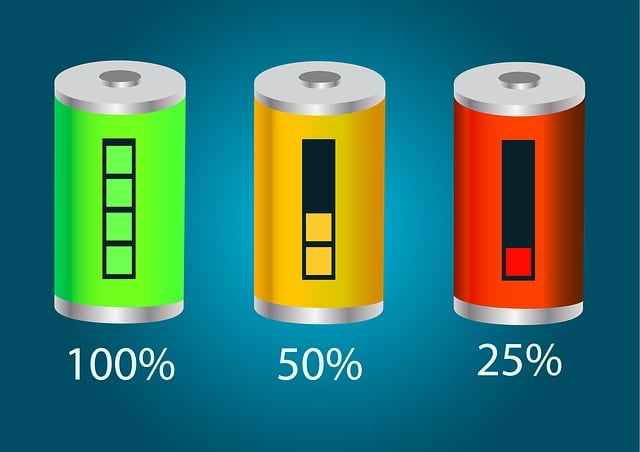Personal Strengths Defined
These traits include wisdom, courage, love, justice, temperance, spirituality, creativity, curiosity, open-mindedness, love of learning, perspective, bravery, perseverance, honesty, zest, kindness, love, teamwork, fairness, leadership, forgiveness, humility, prudence, self-regulation, and appreciation of beauty. Understanding and harnessing these personal strengths can contribute to a more fulfilling and meaningful life.
One key aspect of personal and professional strengths is the idea that they are malleable and can be developed over time through conscious effort and practice. This aligns with the growth mindset, a concept developed by psychologist Carol Dweck, which emphasizes the belief that abilities and intelligence can be cultivated through dedication and hard work. Embracing a growth mindset can empower individuals to actively work on enhancing their strengths, leading to greater personal and professional achievements.

Moreover, the application of personal strengths extends beyond individual well-being and can positively impact interpersonal relationships, team dynamics, and societal contributions. Recognizing and appreciating the strengths of others can foster collaboration and understanding, creating a collective environment where diverse talents are acknowledged and valued. This interconnected web of strengths not only uplifts individuals but also contributes to the overall betterment of communities and societies at large.
The Significance of Self-Assessment for Personal Growth
Self-assessment is an indispensable tool on the journey toward personal growth and self-improvement. It involves introspection, reflection, and a deep understanding of one’s own strengths and weaknesses. Often underestimated, the practice of self-assessment allows individuals to gain clarity about who they are, their abilities, and areas that require further development.
By engaging in this introspective process, one becomes better equipped to make informed decisions, set realistic goals, and embark on a path of continuous growth. Through self-assessment, we gain valuable insights into our potential to grow as human beings.
It helps us identify patterns of behaviors and thought processes that may be hindering our progress or obstructing our ability to reach our full potential. Moreover, it cultivates a deeper sense of self-awareness by encouraging us to confront uncomfortable truths about ourselves, both positive and negative, as we uncover hidden talents or confront limitations.
The Purpose of the Outline: a Comprehensive Guide for Assessing Strengths and Weaknesses

The purpose of this outline is to provide you with a comprehensive guide on how to find my strengths by assessing your strengths and weaknesses effectively. It aims to equip you with practical tools and strategies that will enable you to embark on a journey of personal growth with confidence.
This guide will explore various aspects related to assessing strengths and weaknesses: from understanding the concept personal strength itself to identifying different types of strengths and weaknesses that exist within individuals. We will delve into the importance of leveraging your strengths for personal growth while also addressing ways in which you can address your weaknesses constructively.
By following this outline’s step-by-step approach tailored specifically for assessing your strengths and weaknesses, you’ll be empowered with knowledge that will help shape your personal development journey positively. Whether you are aiming for career advancement or seeking personal fulfillment, this comprehensive guide will enable you to navigate the intricate landscapes of self-assessment with clarity and purpose.
So, let us embark on this voyage of self-discovery, armed with the understanding that self-assessment is not a one-time exercise but an ongoing process that holds the key to unlocking your true potential. Through introspection and evaluation, we can make meaningful strides toward personal growth and lead more fulfilling lives.
Understanding Strengths
What are strengths?
Strengths, in the context of personal development and career planning, encompass a wide range of attributes that contribute to an individual’s effectiveness and success in various aspects of life. These can include both inherent qualities and acquired skills. In the realm of career planning, strengths often manifest as a combination of one’s talents, education, experiences, and personal traits.
For instance, someone may possess excellent communication skills, analytical thinking, leadership qualities, or adaptability, all of which can be considered strengths in a professional setting. Identifying and understanding these strengths is crucial for making informed career decisions and pursuing opportunities that align with one’s capabilities and aspirations.
When preparing a career plan, several factors come into play that can significantly influence the trajectory of one’s professional journey. A person’s ability to work under pressure is a vital consideration, as certain careers demand resilience and composure in challenging situations. Additionally, the capacity to navigate through bureaucratic structures is essential in many organizational settings.
Resources, such as a network with influential individuals, can open doors and provide valuable support. Personality characteristics and traits also play a pivotal role, shaping how individuals interact with colleagues, handle responsibilities, and adapt to different work environments. A holistic career plan takes into account these multifaceted elements, ensuring a comprehensive approach to personal and professional growth.
Take the Strengths Test

Taking a strengths test serves as a foundational step in the journey of self-discovery and personal development. The results provide insights into your inherent capabilities and areas where you naturally excel. However, the true value lies not just in the test itself but in the interpretation of the results and the subsequent decisions you make based on that understanding.
It’s essential to view the strengths identified as tools in your personal toolkit, each serving a unique purpose. Consider them as assets that can be strategically applied to enhance various aspects of your life.
The application of strengths becomes most impactful when integrated into everyday activities. Whether in personal relationships, academic pursuits, or professional endeavors, consciously leveraging your strengths can lead to increased effectiveness and satisfaction. Furthermore, the real test of one’s strengths emerges during challenging times.
Instead of viewing difficulties as obstacles, consider them as opportunities to employ your strengths creatively and overcome adversity. This proactive approach not only cultivates resilience but also reinforces the idea that personal strengths are dynamic and can be harnessed to navigate through life’s complexities.
The Significance of Strengths in Personal Development
In the realm of personal growth and development, strengths play a pivotal role. When we talk about strengths, we refer to those inherent qualities, capabilities, or attributes that contribute positively to our personal and professional lives.
These strengths form the foundation upon which we build our achievements and find fulfillment. Understanding and harnessing your strengths can lead to enhanced self-awareness, improved self-confidence, increased motivation, and ultimately pave the way for greater success.
Identifying Your Unique Strengths Through Self-Reflection and Introspection
As you delve into the realms of self-reflection and introspection, it’s essential to examine not only your accomplishments but also moments of challenge and growth. Reflecting on both successes and setbacks provides a holistic view of your journey and the strengths that have emerged from various situations.
Consider the skills and qualities you naturally gravitate towards, the activities that bring you joy and fulfillment, and the moments when you feel most in tune with your authentic self. This comprehensive exploration helps in identifying nuanced strengths that might be overlooked in the hustle of daily life.
Moreover, the process of self-reflection extends beyond a one-time exercise; it is an ongoing practice that evolves as you grow and change. Regular check-ins with yourself, perhaps on a monthly or quarterly basis, allow you to adapt your understanding of your strengths to align with your current circumstances and aspirations.
Embrace the fluidity of personal growth and be open to discovering new facets of your strengths over time. This continuous self-awareness not only enriches your understanding of who you are but also empowers you to make intentional choices that resonate with your authentic self.
Reflecting on Past Accomplishments and Moments of Excellence

One effective way to further identify your personal strengths is by reflecting on past accomplishments and moments when you excelled. Recall instances where you achieved outstanding results or received recognition for your work. Think about the skills you utilized during those times or the qualities that may have contributed to those achievements.
Consider how these moments made you feel, confidence, joy, fulfillment, and identify any patterns that emerge from these experiences. Reflecting on past accomplishments not only helps uncover hidden strengths but also serves as a reminder of your capabilities during times when doubt might creep in.
Analyzing Feedback From Others
Feedback from others can be an invaluable tool for recognizing our own strengths. Seek feedback from trusted friends, family members, colleagues, mentors, and individuals who have observed you closely in various aspects of life.
Pay attention to recurring themes or patterns in their feedback. What do they consistently praise or appreciate about you?
Their perspectives can offer unique insights into your strengths that you might not have recognized on your own. Be open to constructive criticism as well, as it can shed light on areas where you may need further development.
Recognizing Activities That Energize and Motivate You
Another effective method for identifying strengths is recognizing the activities that energize and motivate you. Engage in self-observation to identify the tasks or projects that leave you feeling invigorated, inspired, and in a state of flow. Notice where your passions lie and what activities bring out the best version of yourself.
Consider the skills involved in these activities and how they align with your natural inclinations. By recognizing the activities that ignite your enthusiasm, you gain valuable insight into the strengths that drive your potential.
By understanding the definition of strengths and their significance in personal development, engaging in self-reflection and introspection, reflecting on past accomplishments, analyzing feedback from others, and recognizing activities that energize and motivate you, you will be well-equipped to identify your unique strengths. This knowledge serves as a solid foundation for personal growth, empowering you to leverage these strengths effectively while embarking on a path towards self-improvement.
Types of Strengths

Core Strengths: Innate Talents and Abilities
Unveiling the unique and inherent qualities that define us as individuals is an essential component of personal growth. Core strengths represent the innate talents and abilities we possess, serving as our natural inclinations toward excelling in specific areas.
These strengths are deeply rooted within us, providing a solid foundation for personal development. Core strengths include creativity, problem-solving, leadership skills, analytical thinking, empathy, and strategic planning.
Assessing core strengths can be a transformative process that requires self-reflection and introspection. One effective method is to reflect on past accomplishments and moments of excellence in various aspects of our personal life namely, academic achievements, professional successes, or personal triumphs.
Identifying patterns within these experiences can provide valuable insights into our core areas of strength. Additionally, seeking feedback from trusted individuals who have observed us in different contexts can offer fresh perspectives on our unique cognitive abilities.
To delve even deeper into understanding core strengths, self-assessment tools like StrengthsFinder can prove immensely helpful. This renowned assessment tool identifies individual strengths based on the understanding that each person possesses dominant themes within their skill set.
By answering a series of carefully designed questions exploring various facets of life, workplace behaviors, relationships, challenges and individual gains insights into their top core strengths. This objective evaluation allows for a more accurate understanding of one’s innate talents while offering guidance on how to leverage them effectively for personal growth.
Transferable Skills: Skills Applicable Across Various Domains or Industries
In addition to core strengths, another crucial aspect to consider when doing job interviews and assessing oneself for personal growth lies in evaluating transferable skills. Transferable skills transcend specific job roles or situations and can be transferred seamlessly from one context to another. Examples of transferable skills include effective communication, time management prowess, adaptability to changing circumstances, critical thinking, problem-solving abilities, teamwork, and emotional intelligence.
These skills are highly sought-after in various professional fields as they contribute significantly to overall success and career advancement. Evaluating transferable skills requires a combination of self-reflection and feedback from others.
Reflecting on experiences where these skills were utilized effectively can help identify the areas in which one excels. Additionally, seeking feedback from supervisors, colleagues, or mentors regarding one’s performance in specific skill-based tasks can provide valuable insights into strengths and areas for improvement.
By assessing both core strengths and transferable skills comprehensively, individuals gain a holistic understanding of their unique abilities. This knowledge becomes a powerful tool for personal growth as it enables individuals to capitalize on their strengths while proactively developing areas that require improvement.
Leveraging Strengths for Personal Growth

Capitalizing on Your Strengths to Enhance Performance and Satisfaction
Embracing your strengths and utilizing them strategically can be a transformative approach toward personal growth. When you identify and capitalize on your strengths, you position yourself to enhance your overall performance and achieve higher levels of satisfaction in various aspects of life. By leveraging your strengths, you tap into the unique qualities that set you apart from others, allowing you to excel in areas where your natural abilities shine.
To begin capitalizing on your strengths, it is crucial to have a clear understanding of what they are. Reflect upon past experiences where you felt most accomplished or received recognition for a job well done.
Consider the tasks or activities that energize and motivate you, as these are often indicators of your inherent strengths. Additionally, seek feedback from trusted individuals who can offer valuable insights into recognizing patterns of excellence within yourself.
Aligning Your Goals With Your Strengths
Once you have identified your strengths, the next step is aligning them with your goals. This alignment is crucial because when your goals are congruent with your natural abilities, it creates a harmonious synergy that propels personal growth.
Assess each goal individually and evaluate how each one aligns with your identified strengths. Consider whether utilizing those particular strengths will enable you to effectively reach the desired outcomes associated with each goal.
If there is alignment between a strength and a goal, highlight this synergy as it signifies potential areas for growth-driven success. On the other hand, if there seems to be a significant mismatch between certain goals and identified strengths, consider whether it would be more beneficial to reevaluate those goals or focus on further developing complementary skills.
Seeking Opportunities That Allow You to Utilize Your Strengths
Once you have aligned your goals with your identified strengths, it becomes essential to seek out opportunities that allow you to fully utilize those strengths. By actively seeking such opportunities, you create an environment that nurtures personal growth, as your strengths are given ample room for expression and development. Start by exploring where your personal and professional strengths can be applied.
Whether it is within your current job role, volunteer work, or personal hobbies and interests, seek out tasks or projects that align with your identified strengths. Look for opportunities where you can contribute in a way that capitalizes on these inherent qualities.
Embrace challenges that allow you to showcase your unique abilities and grow in areas where you have a natural propensity to excel. To maximize the benefits of leveraging your strengths, don’t hesitate to communicate with others about what you bring to the table.
Share your insights about how specific tasks or projects align with your identified strengths when collaborating with colleagues or pursuing new opportunities. By doing so, you not only demonstrate self-awareness but also invite others to recognize and appreciate the value you bring through your unique capabilities.
Remember, leveraging your strengths is an ongoing process of refinement and growth. As you continue capitalizing on these inherent qualities and seeking suitable opportunities, both personally and professionally, it becomes increasingly evident how this strategic approach contributes significantly to individual fulfillment and the achievement of long-term goals for personal growth.
Understanding Weaknesses

Definition of Weaknesses in the Context of Personal Growth
Weaknesses, in the realm of personal growth, refer to those areas where individuals may lack proficiency or face difficulties. They can manifest as skill-based deficiencies or personality-based traits that hinder progress and limit potential.
Skill-based weaknesses encompass specific competencies or knowledge gaps, while personality-based weaknesses involve behavioral patterns that impede personal development. Identifying weaknesses is essential for self-awareness and improvement since it allows individuals to focus their efforts on addressing these limitations, ultimately fostering growth and maximizing potential.
Another purpose of Positive Psychology is to bring the balance between strength and weakness. In traditional psychology the view is that other aspects of the psychology focus over pain, trauma, and negative emotions.
In this respect, positivists see weakness mainly as the strength that is lowest among the 24 characters they are in. Peterson and Seligman (2004) believe all individuals are unique and understanding their individual characteristics helps us to react to the world and act in a better way.
Importance of Acknowledging Weaknesses for Improvement
Acknowledging one’s weaknesses is a vital step toward personal improvement. It requires individuals to confront their limitations with honesty and humility, setting aside ego-driven impulses that may hinder progress. By recognizing areas where improvement is needed, people open doors to self-reflection and learning opportunities.
Understanding our limitations not only enables us to take steps toward improvement but also aids in building resilience and adaptability. The process of acknowledging weaknesses also creates space for self-compassion and understanding.
We are all human, and bound to have flaws and areas where we struggle more than others. Accepting this reality allows us to be kinder towards ourselves when facing challenges stemming from our personal weaknesses.
It fosters an environment that promotes growth rather than self-criticism, encouraging individuals to take risks outside their comfort zones without fear of failure. Moreover, acknowledging weaknesses helps individuals develop a comprehensive understanding of themselves.
When we explore our vulnerabilities, we gain insights into aspects of our character that we may have previously overlooked or ignored. This deeper level of self-awareness facilitates personal growth by providing clarity on what attributes need nurturing or further development.
Mindset Shift: Weaknesses as Opportunities
Rather than viewing weakness solely as deficiencies or shortcomings, embracing them as opportunities for growth can be transformative. When we reframe weaknesses in this way, they become catalysts for improvement and avenues for gaining new skills or enhancing existing ones. By addressing our weaknesses head-on, we build resilience and develop a growth mindset that fuels personal development.
However, it is crucial to distinguish between weaknesses that are inherent characteristics and those that can be improved with effort and practice. While some personality traits may be hardwired, such as introversion or being less inclined towards an analytical mindset, there are skills that can be developed over time through deliberate practice.
Recognizing the difference helps individuals understand which areas require acceptance and adaptation versus those where strategic efforts can yield positive results. Understanding weaknesses within the context of personal growth involves recognizing skill-based deficiencies and personality-based traits hindering progress.
Acknowledging weaknesses is essential as it fosters self-awareness, compassion, learning opportunities, and resilience. By viewing weakness as an opportunity rather than a liability, individuals adopt a growth mindset that propels them towards improvement and maximizes their potential for personal development.
Types of Weaknesses

Skill-Based Weaknesses: Identifying Areas Where You Lack Proficiency or Experience
Identifying skill-based weaknesses is crucial for personal growth as it allows us to pinpoint areas where we may be lacking in proficiency or experience. It requires an honest assessment of our abilities and a willingness to acknowledge our shortcomings. To identify skill-based weaknesses, start by reflecting on tasks or activities that you struggle with or find challenging.
Ask yourself which skills are necessary to excel in these areas but are currently lacking in your repertoire. Once you have identified the specific skills that need improvement, it is essential to develop a plan to enhance them.
This plan should include setting clear goals and objectives related to the skill you want to improve, breaking down the learning process into manageable steps, and seeking opportunities for practice and further development. Consider enrolling in relevant courses, seeking mentorship or guidance from experts in the field, or engaging in self-directed learning through books and online resources.
Personality-Based Weaknesses: Recognizing Traits or Behaviors That Hinder Personal Growth
Personality-based weaknesses refer to traits or behaviors that can hinder personal growth if left unaddressed. Recognizing these weaknesses requires introspection and self-awareness.
Take time to reflect on your behavior patterns, reactions to stressors, and recurring challenges you face in relationships or work environments. Being self aware of personality-based weaknesses is the first step toward overcoming them.
It may involve acknowledging traits such as procrastination, lack of assertiveness, perfectionism, impulsivity, or difficulty managing emotions effectively. Once identified, seek strategies for improvement such as therapy sessions focused on emotional regulation techniques, practicing self-compassion and mindfulness exercises regularly.
It is important not to see personality-based weaknesses as fixed limitations but rather as opportunities for growth and development. By recognizing them early on and committing to addressing them consciously over time, you can gradually transform these weaknesses into strengths, thereby unlocking your full potential.
Conclusion
In the journey of personal growth, assessing our strengths and weaknesses is an essential part. By better understanding our areas of expertise and where we lack proficiency or experience, we can develop actionable plans for improvement.
Skill-based weaknesses require identifying specific areas that need enhancement and formulating strategies to acquire the necessary skills. Personality-based weaknesses necessitate recognizing traits or behaviors that hinder personal growth and actively working towards changing them.
While the process of self-assessment may at times feel challenging or uncomfortable, it ultimately empowers us to become better versions of ourselves. It provides a roadmap for personal development and serves as a catalyst for growth in both our personal and professional lives.
Embracing this journey with optimism allows us to embrace our imperfections as opportunities for improvement rather than limitations. So let us embark on this path with curiosity, determination, and an unwavering belief in our ability to transform weakness into strength. All the best in your journey forward!
Author

Yoga Instructor & Lifestyle Coach
Founder of Ready Steady Life, Mandy promotes wellness and holistic living through insights drawn from her experiences as a yoga instructor, lifestyle coach, and business owner. Her articles cover topics from healthy recipes to manifesting abundance, inspiring readers to prioritize well-being.






